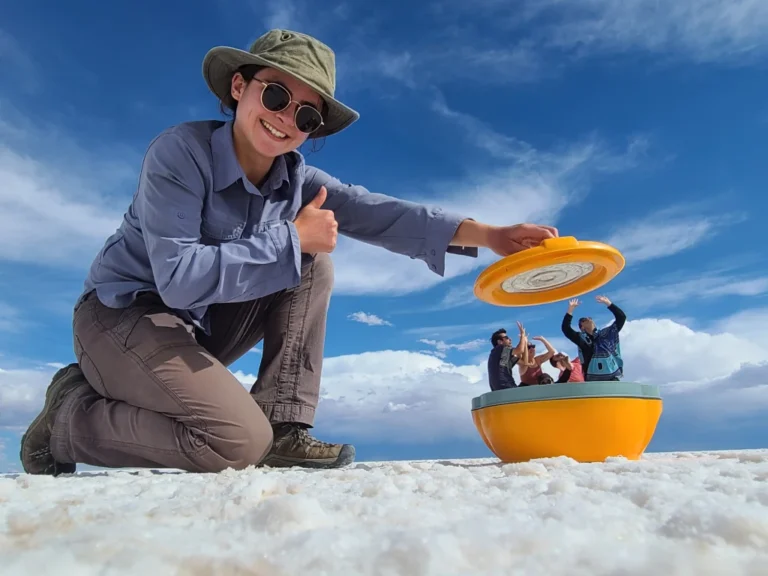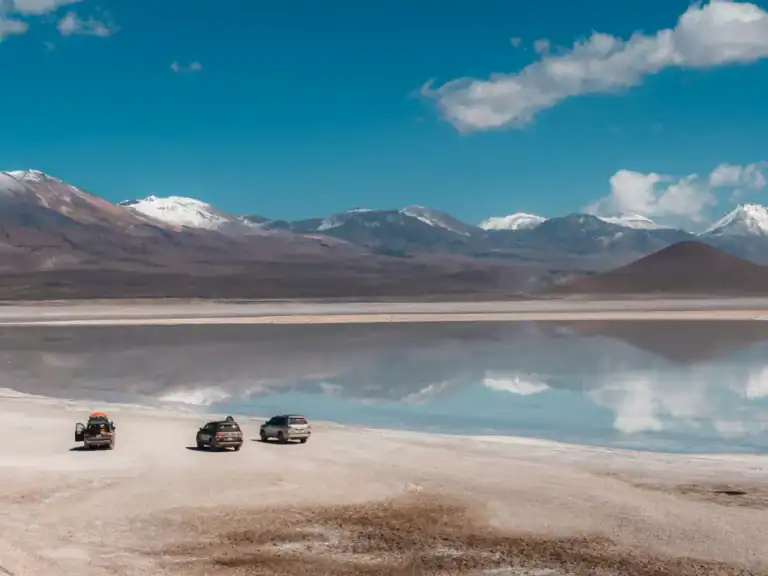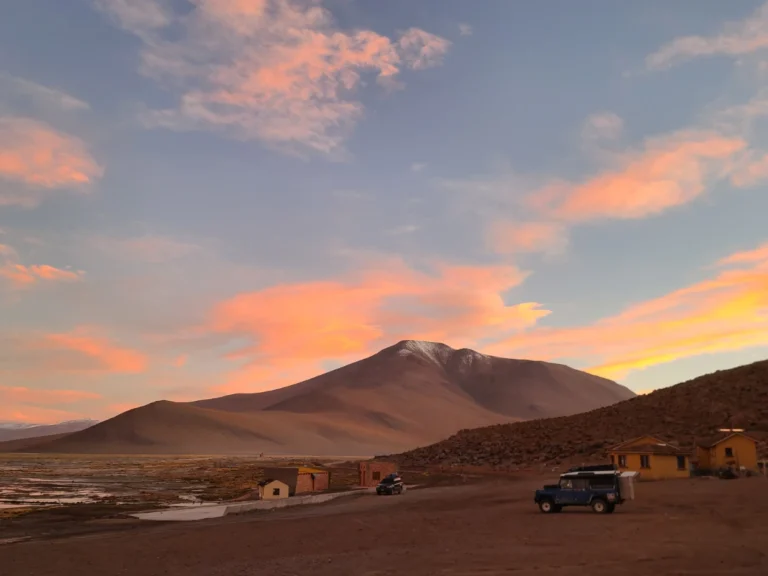Do You Need a Visa for Bolivia? Here’s the Lowdown

Ah, visas, the bit of trip planning that somehow manages to be both boring and stressful. So, do you need a visa for Bolivia? Short answer: it depends where you’re from. But don’t worry, it’s not a nightmare & I’ve broken it down so you’re not stuck Googling things last minute at the border.
If you’re looking for a broader checklist beyond just visas – here’s what Bolivia’s 2025 entry requirements look like, including vaccines, paperwork & those random things border guards sometimes ask for.
Who doesn’t need a visa?
If you’ve got a UK passport or one from most of Europe, Australia, Canada, New Zealand etc, you’re in luck. No tourist visa needed. You get up to 90 days in Bolivia per year, usually handed out in 30-day chunks, which you can extend while you’re there. This website I found goes into more detail if you’re from one of the countries not mentioned above!
Fun fact: Bolivia splits visitors into three groups: no visa, visa on arrival & visa required in advance. Classic bureaucratic logic but actually quite helpful when you’re figuring it out (more below).
If you’re British like me, you can just turn up & they’ll stamp you in (pic below). No forms to fill out in advance, no visa fees. Super chill compared to a lot of other South American countries.
Border staff might ask for proof of onward travel, a hotel booking or (if you’re heading into jungle territory) a yellow fever certificate. But most people I’ve spoken to (myself included) have sailed through with zero drama.
Planning your route around all this? Worth having a peek at the best time to visit Bolivia & a quick skim of what the climate is like depending on where you’re heading.

What about travellers from the US?
If you’ve got a US passport, things are slightly more admin-heavy. You do need a visa but it’s not a massive faff. You can get it on arrival at major airports or apply ahead of time. It costs about $160 USD which, by the way, is a bit of diplomatic payback.
Here’s a link for US people that I found & visa rules, although you guys aren’t short of info online to cross-check with!
Fun fact: That price tag isn’t random. It’s what the US charges Bolivians for a visa, so Bolivia just gave it right back. If that ain’t a political FU, I’m not sure what is!
The visa lasts for 10 years & lets you stay up to 90 days per year. You’ll need to show:
- A passport photo
- A hotel booking or letter of invitation
- Proof of funds or a basic itinerary
- Yellow fever certificate if you’re heading east
Top tip: print everything. Border guards love a neat folder of docs, especially if you’re coming from a Group 2 or 3 country.
Also – heads up, Wi-Fi’s not always amazing near borders or in rural zones. I wrote this piece on what internet in Bolivia is actually like if you need to download docs or prove a booking on the spot. However, if that sounds like a faff & you’re wondering whether it’s worth it, here’s why Bolivia is seriously underrated.
Visa Groups Explained (Yep, Bolivia’s Got a System)
Now here’s something I brushed past earlier with the fun fact but it’s actually pretty handy to know – Bolivia splits travellers into three visa groups. Bureaucratic? Yep. But weirdly useful once you get your head around it.
Basically, which group you’re in depends on your passport. It tells you whether you need a visa, how to get it & what hoops you might have to jump through. Here’s the gist:
Group 1 – Visa-Free Vibes
If you’re from the UK (hello), most of Europe, Australia, Canada, New Zealand & a few others – good news. You don’t need a visa to enter Bolivia for tourism.
You’ll usually get 30 days on arrival, which you can extend to 90 days in total per calendar year. Just rock up with a passport that’s valid for 6 months & you’re good to go. No advance paperwork, no fees, no faff.
Fun fact: Chile, Peru & Ecuador also have pretty chilled visa rules for these countries – makes Andean country-hopping easy peasy.
Group 2 – Visa on Arrival or Embassy Pick-Up
This group includes the US – and yeah, it’s slightly more admin. You’ll need a visa to get in, but you’ve got two options:
- On arrival at airports like La Paz or Santa Cruz
- Or in advance from your local Bolivian consulate
Both work. Just depends if you want to pay $160 USD at the border (bit steep but quick), or sort it beforehand for free & breeze through.
You’ll need to show:
- Your passport (obvs)
- Hotel booking or invitation letter
- A passport-sized photo
- Proof of funds
- Yellow fever certificate if you’re jungle-bound
Side note: That $160 fee? Bolivia brought it in to match what the US charges their citizens – bit of spicy diplomacy right there.
Group 3 – Visa Before You Travel
If you’re from a Group 3 country, you’ll need to get your visa sorted before you fly – no border pickups allowed.
It’s all done through your nearest Bolivian embassy. Same general requirements as above, though some travellers get asked for more – like proof of finances, return flights or even a police certificate. So give yourself time.
Don’t chance it if you’re cutting things fine – Bolivian border guards aren’t always the most flexible bunch.
Wanna be extra sure? You can always double-check your status on the Bolivian consulate site or through that visa checker tool on Bolivia Hop (they’re not sponsoring this post but fair play – it’s useful).
Visa on arrival vs advance application
Both options are legit. If you’re flying into La Paz or Santa Cruz, visa on arrival is normally smooth. If you’re doing the overland thing, especially at one of the quieter crossings, it’s safer to have it sorted in advance. I’ve tried it all, flown in, crossed the Paraguay border etc, yet my most memorable is the Peru crossing over Lake Titicaca, would highly recommend! Pic below is related to that 🙂
You also don’t want to be stuck arguing with a sleepy border guard at 7am in the Andes.
If you’re planning a wild road trip in or out, don’t miss Bolivia’s Death Road bike tour. It’s legendary for all the right (and wrong) reasons.

Thinking of staying longer?
Bolivia can be a bit of a slow burn, so if you find yourself wanting to stick around, you’ll need to extend your visa at immigration once you’re in. Don’t overstay without sorting it. You’ll get fined when you leave. It’s not a crazy amount but still a pain when you just want to catch your flight.
If you’re genuinely tempted by a longer stay, have a look at what it’s actually like to live in Bolivia. I’ve met a few people who came for a month & just… stayed. It’s that kind of place. Plus, Bolivia is cheap to travel, so your budget won’t be having a tiff.
And here’s a handy article on which Bolivia tours are worth booking in advance if you’re putting your route together at the mo.
So, do you need a visa for Bolivia?
Depends on your passport. If you’re from the UK or most of Europe, you’re golden. No visa needed, no stress. If you’re from the US or a few other countries (check that link above if interested), you’ll need one but it’s manageable & you’ve got options.
Just don’t leave it until the night before you travel. Print your stuff. Check your entry point. Breathe. If you want a much more detailed breakdown on Bolivia, then checkout my traveller’s guide to exploring Bolivia.
Also, if you’re headed to jungle zones or anywhere steamy, check Bolivia’s vaccination requirements so you’re not caught out. And if you’re wondering about safety in general, this piece on whether Bolivia is safe for tourists is worth a look.

FAQs About Visas for Bolivia (or just lazy and cba to read the above)
How long can I stay without a visa?
If you’re from a visa-free country, you can stay up to 90 days in a calendar year. Usually you get 30 days on arrival & can extend it once inside the country.
Can I enter overland from Peru or Chile without a visa?
Yes, as long as your passport doesn’t require one. If it does, you might be able to get it at the border but not all crossings offer that so double check. And avoid the sketchy ones unless you love chaos. If you’re weighing up which border to use, this article on the crime rate in Bolivia might help you steer clear of the more chaotic ones.
Is the visa on arrival reliable?
Generally yes, especially at airports. Just make sure your documents are printed, clear & in order. No one wants to be the person holding up the queue.
Can I work or volunteer with a tourist visa?
Nope. Tourist visas are for travel only. If you’re planning to work, volunteer or study, you’ll need to get a different visa type. Chat to the consulate before booking anything long-term.
What happens if I overstay?
You’ll get a fine when you leave. Not bankrupt-level bad but annoying enough to sort it properly in advance. Do yourself a favour & renew if you plan to linger.
Happy Travels!






